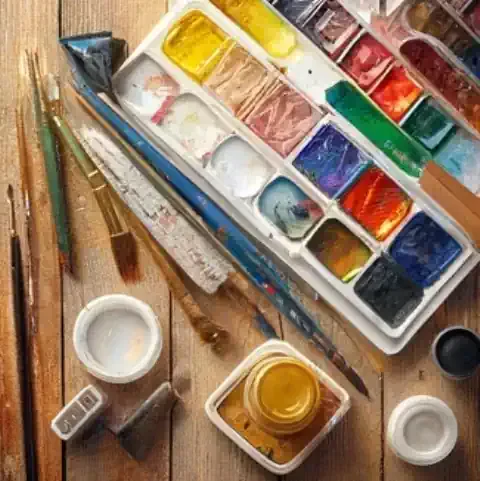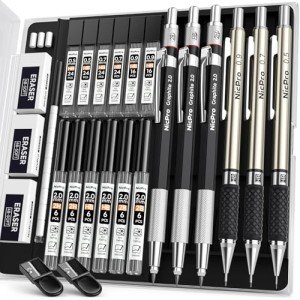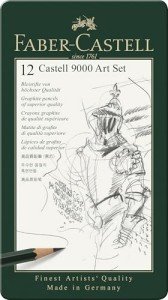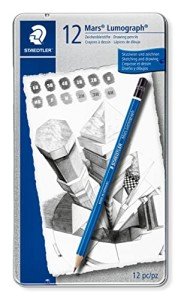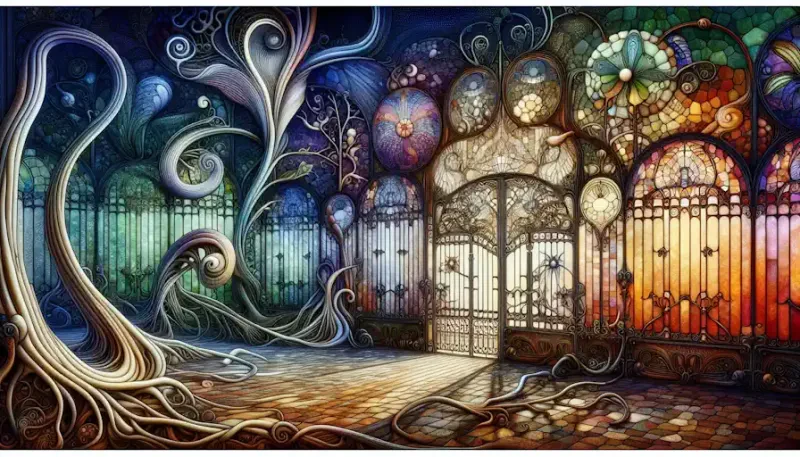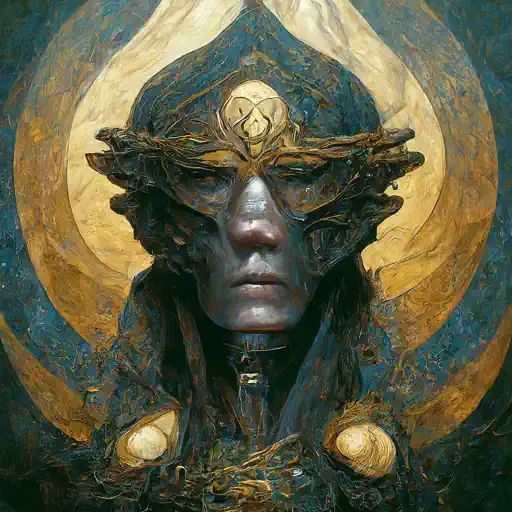Introduction: Embarking On Your Artistic Journey
The allure of artistic expression is undeniable. It beckons both seasoned creatives and curious newcomers alike, promising a world of limitless possibilities where imagination takes tangible form. The blank canvas, the pristine sheet of paper, the untouched block of clay – these are not mere materials but invitations to embark on a journey of self-discovery and boundless creativity.
The Excitement And Overwhelm Of Art Supplies
As you take your first steps into this vibrant realm, a kaleidoscope of colors, textures, and tools awaits. Brushes in every shape and size, paints in a dizzying array of hues, papers with varying weights and textures, sculpting tools for every conceivable form – the sheer abundance of art supplies can be as overwhelming as it is exciting. For the uninitiated, this seemingly endless array of options can quickly transform the thrill of artistic exploration into a state of paralysis. Where to begin? What to choose? The questions pile up, casting a shadow of doubt over your creative aspirations.
The Importance Of Choosing The Right Tools For Your Medium
Fear not, for every masterpiece begins with a single brushstroke, a single line, a single sculpted curve. And the key to unlocking your artistic potential lies in choosing the right tools for your chosen medium. Much like a chef selects the perfect knife for each culinary creation, an artist must carefully consider the materials that will best bring their vision to life. The right tools can not only enhance your artistic expression but also elevate the entire creative process, transforming it from a frustrating struggle into a joyful dance of imagination and skill.
An Overview Of This Comprehensive Guide
In this comprehensive guide, we will embark on a journey through the vast landscape of art supplies, illuminating the path to artistic fulfillment. We will delve into the unique characteristics of various artistic mediums, exploring the tools and materials that best suit each one. Whether you are a budding painter, a passionate sketcher, a mixed media enthusiast, a sculptor seeking to mold your imagination, or a printmaker with a desire to reproduce your art, this guide will provide you with the knowledge and insights necessary to make informed decisions about your artistic arsenal. By the end, you will be equipped with the confidence to navigate the world of art supplies and select the perfect tools to unleash your creative potential.
Understanding Your Artistic Medium
In the vast landscape of artistic expression, the medium you choose becomes the vessel through which your creativity flows. It's the language you'll use to communicate your unique vision, the toolset that will shape your artistic endeavors. Understanding your artistic medium is fundamental to selecting the right supplies and techniques, paving the way for a fulfilling and successful creative journey.
Defining Your Artistic Medium
Your artistic medium encompasses the materials, tools, and techniques you employ to create your art. It's the foundation upon which your creative expression rests, dictating the possibilities and limitations of your work. From the vibrant strokes of paint on canvas to the delicate lines etched in metal, each medium offers a unique set of characteristics that can be harnessed to bring your artistic vision to life.
Popular Mediums And Their Unique Characteristics
The world of art is brimming with diverse mediums, each offering its own distinct allure and creative potential. Let's explore some of the most popular mediums and the unique characteristics that define them:
Drawing: The Art Of Line And Form
Drawing is often considered the cornerstone of artistic expression. It is a fundamental skill that transcends all visual mediums, providing a framework for understanding line, shape, form, and composition. From quick sketches to meticulously detailed renderings, drawing allows artists to capture the essence of their subjects with simplicity and elegance.
Painting: A Symphony Of Color And Texture
Painting is a captivating medium that allows artists to explore the interplay of color, light, and texture. Whether you prefer the translucent washes of watercolor, the bold strokes of acrylic, or the rich layers of oil, painting offers endless possibilities for self-expression. With a vast array of paints, brushes, and surfaces to choose from, you can create works that are both visually stunning and emotionally evocative.
Mixed Media: Where Boundaries Blur And Creativity Flourishes
Mixed media is a dynamic and experimental medium that embraces the fusion of diverse materials and techniques. It encourages artists to break free from traditional boundaries, combining painting, drawing, collage, sculpture, and found objects to create unique and layered artworks. Mixed media is a celebration of artistic freedom, where anything goes and creativity knows no limits.
Sculpture: Three-Dimensional Expressions Of Imagination
Sculpture is a tangible art form that allows artists to transform their ideas into three-dimensional objects. Whether you're sculpting with clay, carving wood, welding metal, or assembling found objects, sculpture offers a unique way to engage with space and form. It invites viewers to interact with art from all angles, experiencing it in a truly immersive way.
Printmaking: Reproducing Art For The Masses
Printmaking is a fascinating medium that involves creating multiple copies of an image from a prepared surface, such as a woodblock, metal plate, or silkscreen. From intricate etchings to bold screen prints, printmaking offers a unique way to reproduce and distribute your art. It democratizes art, making it accessible to a wider audience and allowing your creative vision to reach far and wide.
Identifying Your Preferred Medium
Choosing your preferred medium is a personal journey of exploration and experimentation. It involves considering your interests, skills, and the kind of artistic expression that resonates with you. Some artists are naturally drawn to the tactile nature of sculpture, while others find solace in the fluidity of watercolor. There's no right or wrong answer – the best medium is the one that ignites your passion and allows you to express your creativity most authentically.
Take the time to experiment with different mediums, explore their unique characteristics, and discover the one that speaks to your soul. Remember, the journey of artistic expression is ongoing, and your preferred medium may evolve as you grow and develop as an artist. Embrace the process of exploration, and let your curiosity guide you towards the medium that will best unlock your artistic potential.
Drawing Supplies: Lines, Shades, and Textures
The art of drawing is a fundamental skill that transcends all visual mediums. It is a language of lines, shades, and textures, capable of capturing the essence of a subject with remarkable simplicity and elegance. Whether you're a seasoned artist or a beginner taking your first tentative strokes, the right drawing supplies can elevate your work and unlock your full creative potential. Let's explore the diverse world of drawing tools, from the humble pencil to the versatile charcoal, and discover the perfect instruments to bring your artistic vision to life.
Pencils: The Foundation of Drawing
Pencils are the workhorses of the drawing world, serving as the primary tool for countless artists throughout history. Their versatility, affordability, and ease of use make them an indispensable part of any artist's toolkit. From quick sketches to meticulously detailed renderings, pencils offer a wide range of expressive possibilities.
Graphite Pencils: Hardness Grades And Uses
Graphite pencils are the most common type of drawing pencil, characterized by their varying degrees of hardness. The hardness grade is indicated by a letter and number combination, such as "HB," "2B," or "6H." The "H" stands for hardness, while the "B" stands for blackness. The higher the number, the harder or softer the lead.
H Pencils: Hard leads produce light, fine lines and are ideal for technical drawings, outlines, and light shading.
B Pencils: Soft leads create dark, rich lines, making them perfect for expressive sketches, shading, and blending.
F Pencils: Fall between H and B pencils in terms of hardness, offering a balance of light and dark lines.
HB Pencils: The most versatile pencil grade, suitable for a wide range of drawing applications.
Understanding the different graphite pencil grades and their applications is crucial for achieving the desired effects in your drawings. Experiment with various grades to discover the ones that best suit your style and technique.
Colored Pencils: Adding Vibrancy And Detail
Colored pencils open up a world of possibilities for adding vibrancy and detail to your drawings. With a vast array of colors and pigment intensities, you can create stunningly realistic portraits, breathtaking landscapes, or imaginative illustrations. Colored pencils can be used dry for a more opaque look or layered and blended to achieve a smooth, painterly effect.
When choosing colored pencils, consider the quality of the pigments, lightfastness, and blending capabilities. Artist-grade colored pencils offer superior pigment quality and lightfastness, ensuring your artwork retains its vibrancy over time. Experiment with different brands and sets to find the ones that best suit your artistic needs.
Water-Soluble Pencils: Versatility And Creative Effects
Water-soluble pencils combine the versatility of traditional colored pencils with the ability to create watercolor-like effects. When dry, they behave like regular colored pencils, producing crisp lines and vibrant colors. However, when water is applied, the pigments dissolve and blend, creating beautiful washes and gradients.
Water-soluble pencils are ideal for adding depth and dimension to your drawings. They can be used to create soft backgrounds, atmospheric effects, or even to mimic the look of watercolor paintings. Experiment with different techniques, such as layering, blending, and wet-on-wet, to discover the full potential of this unique medium.
Mechanical Pencils: Convenience And Consistency
Mechanical pencils offer a convenient alternative to traditional wooden pencils. They feature a refillable lead chamber and a mechanism that advances the lead with a simple click. This eliminates the need for sharpening and ensures consistent line widths throughout your drawing.
Mechanical pencils are available in various lead sizes, ranging from 0.3 mm to 0.9 mm. Choose a lead size that suits your preferred line weight and drawing style. Some mechanical pencils also offer adjustable lead hardness, giving you even greater flexibility in your artistic expression.
Painting Supplies: Colors, Textures, and Layers
Painting is an art form that has captivated humanity for centuries. It's a medium where colors dance, textures intertwine, and layers of pigment build upon each other to create stunning visual narratives. Whether you're drawn to the delicate washes of watercolor, the bold strokes of acrylic, or the rich luminosity of oil, choosing the right painting supplies is essential to unlocking your creative potential and achieving your desired results. Let's delve into the world of paints, brushes, and surfaces, exploring the tools and techniques that will empower you to express your artistic vision with confidence and finesse.
Watercolor: Translucent Washes and Delicate Effects
Watercolor is a beloved medium renowned for its ethereal beauty and translucent washes. It offers a unique blend of vibrancy and subtlety, allowing artists to capture the delicate nuances of light and shadow with unparalleled grace. From breathtaking landscapes to intimate portraits, watercolor opens up a world of artistic possibilities.
Watercolor Paints: Student Grade vs. Artist Grade
When choosing watercolor paints, you'll encounter two main categories: student grade and artist grade. Student-grade paints are more affordable, making them a great option for beginners and those on a budget. However, they often contain less pigment and may have lower lightfastness, meaning the colors may fade over time.
Artist-grade paints, on the other hand, boast higher quality pigments with superior lightfastness, ensuring your artwork retains its vibrancy for years to come. While they may be more expensive, the investment is worthwhile if you're serious about your art and want to create lasting pieces.
Watercolor Paper: Weights and Textures
Watercolor paper is specifically designed to handle the wetness of watercolor paints without warping or buckling. It comes in various weights, measured in pounds per ream (lb), and textures, including:
Hot Press: Smooth surface, ideal for detailed work and fine lines.
Cold Press: Slightly textured surface, versatile and suitable for most watercolor techniques.
Rough: Coarsely textured surface, perfect for creating bold, expressive washes.
Choosing the right paper weight and texture depends on your personal preference and the desired effect. Experiment with different options to find what works best for your style and technique.
Watercolor Brushes: Natural Hair for Optimal Flow
Watercolor brushes are typically made with natural hair, such as sable or squirrel, which excels at holding and releasing water, resulting in smooth, even washes. Round brushes are versatile and can be used for both fine details and broader strokes, while flat brushes are ideal for creating washes and filling larger areas.
When selecting brushes, consider the size, shape, and quality of the bristles. Invest in good quality brushes that will hold their shape and maintain their spring over time. Proper care and maintenance will ensure your brushes last for years, allowing you to focus on your artistic expression.
Palette and Water Containers: Essential Tools
A palette is a flat surface where you mix and blend your watercolor paints. Ceramic or porcelain palettes are ideal for watercolor, as they are non-absorbent and easy to clean. You'll also need two water containers: one for clean water to rinse your brushes and another for dirty water to avoid contaminating your colors.
Acrylic: Versatile and Fast-Drying
Acrylic paints are a versatile and popular medium that has revolutionized the art world. They offer the vibrancy of oils with the convenience of water-based paints, making them suitable for a wide range of techniques and surfaces. With acrylics, you can create everything from bold abstract paintings to detailed realistic portraits.
Acrylic Paints: Heavy Body, Soft Body, and Fluid
Acrylic paints come in three main consistencies: heavy body, soft body, and fluid. Heavy body acrylics are thick and buttery, ideal for impasto techniques and creating texture. Soft body acrylics have a smoother, thinner consistency, making them perfect for glazing and blending. Fluid acrylics are the thinnest, with an ink-like consistency that's ideal for pouring techniques and fluid art.
Choosing the right consistency depends on your preferred style and technique. Experiment with different types to discover the ones that best suit your artistic needs. You can also mix and match different consistencies to achieve unique effects.
Acrylic Brushes: Synthetic for Durability
Synthetic brushes are the preferred choice for acrylic paints, as they are durable, resilient, and easy to clean. Look for brushes with firm bristles that can handle the thick consistency of heavy body acrylics and maintain their shape over time. Round brushes are versatile and suitable for most techniques, while flat brushes are great for creating washes and filling larger areas.
Mediums: Altering Paint Properties
Acrylic mediums are additives that can be mixed with your paints to alter their properties. They can extend drying time, improve flow, add texture, create glazing effects, or even transform your acrylics into mediums with the characteristics of oil or watercolor paints. Experimenting with different mediums can unlock new possibilities and expand your creative repertoire.
Palettes: Plastic or Stay-Wet
Plastic palettes are a popular choice for acrylics because they are lightweight, inexpensive, and easy to clean. Stay-wet palettes are another option, designed to keep your paints moist for extended periods, reducing waste and allowing you to work at a more leisurely pace.
Mixed Media Supplies: Unleashing Creativity
Mixed media art is a playground for the adventurous artist, a realm where boundaries blur and creativity flourishes. It's an invitation to embrace the unexpected, to combine diverse materials and techniques, and to create artworks that are as unique as they are captivating. If you're seeking a medium that encourages experimentation and rewards innovation, mixed media is your ultimate canvas. Let's delve into the rich tapestry of mixed media supplies, from collage materials to inks, gels, and beyond.
Collage Materials: A World of Textures and Patterns
Collage is the art of assembling diverse materials to create a unified composition. It's a playground of textures, patterns, and colors, where you can juxtapose seemingly disparate elements to create harmonious and visually stimulating artworks. The possibilities are endless, limited only by your imagination.
Paper: From vintage book pages and patterned scrapbook paper to handmade papers and textured cardstock, the world of paper offers a vast array of options for collage artists.
Fabric: Scraps of fabric, lace, ribbon, and other textiles can add a touch of whimsy and dimension to your collages.
Photographs: Personal photographs, vintage snapshots, or even magazine clippings can be incorporated into your collages to tell stories, evoke emotions, or create visual narratives.
Found Objects: Anything from bottle caps and buttons to feathers and dried flowers can be repurposed as collage elements, adding unexpected textures and visual interest.
Markers: Alcohol-Based for Vibrant Colors and Blending
Alcohol-based markers are a popular choice for mixed media artists due to their vibrant colors, smooth application, and ability to blend seamlessly. They come in a wide range of colors and tip sizes, allowing you to create fine details, bold outlines, and everything in between.
Alcohol markers are particularly well-suited for layering and blending techniques. You can overlay different colors to create depth and dimension, or use a colorless blender marker to seamlessly merge colors and create gradients. Their fast-drying nature also makes them ideal for quick sketches and spontaneous mark-making.
Inks: Acrylic, India, and Alcohol Ink for Layering
Inks offer another dimension to mixed media art, adding depth, vibrancy, and unexpected effects. Acrylic inks are water-based and come in a wide range of colors, including metallic and pearlescent finishes. They can be used for washes, splatters, drips, or even to create marbled effects.
India ink is a traditional black ink known for its rich, deep color and archival quality. It can be used for calligraphy, drawing, or even to create dramatic backgrounds in mixed media pieces. Alcohol inks are vibrant, translucent inks that interact in fascinating ways when applied to non-porous surfaces. They can be used to create stunning abstract designs, marbled effects, and even resin jewelry.
Other Materials: Gels, Pastes, and Adhesives
Mixed media artists often incorporate various gels, pastes, and adhesives into their work to add texture, dimension, and visual interest. Modeling paste, for example, can be used to create raised surfaces and sculptural elements. Crackle paste creates a network of fine cracks when dry, adding an aged and weathered look to your artwork.
Adhesives play a crucial role in mixed media, allowing you to securely bond different materials together. Choose adhesives that are acid-free and archival to ensure the longevity of your artwork.
Tools: Brushes, Palette Knives, and Sponges
A wide variety of tools can be employed in mixed media art, depending on the desired effect. Brushes are essential for applying paints and inks, while palette knives can be used to spread gels and pastes, create textured marks, or even scrape away layers of paint to reveal underlying colors.
Sponges are versatile tools that can be used for blending, dabbing, and creating textured effects. You can use natural sponges or synthetic sponges, depending on your preference and the desired texture. Experiment with different tools to discover new ways to express your creativity and add depth and dimension to your mixed media artworks.
Sculpture Supplies: Three-Dimensional Expressions of Imagination
Sculpture is a captivating art form that transforms ideas into tangible, three-dimensional forms. It's a tactile and visceral experience that invites viewers to engage with art from all angles, exploring its textures, contours, and the interplay of light and shadow. Whether you're drawn to the malleability of clay, the warmth of wood, the strength of metal, or the permanence of stone, sculpture offers a unique avenue for artistic expression. Let's delve into the world of sculpture supplies, exploring the diverse materials and tools that will empower you to bring your sculptural visions to life.
Clay: Air-Dry, Polymer, And Pottery Clay
Clay is a versatile and widely used sculpting material that offers endless possibilities for artistic expression. It can be molded, shaped, and transformed into a myriad of forms, from delicate figurines to monumental sculptures.
Air-Dry Clay: As the name suggests, air-dry clay hardens naturally when exposed to air, eliminating the need for kiln firing. It's a convenient and accessible option for beginners and those without access to a kiln.
Polymer Clay: A synthetic clay that cures in a home oven, polymer clay is known for its vibrant colors, durability, and versatility. It's ideal for creating intricate details and miniature sculptures.
Pottery Clay: Traditional pottery clay requires firing in a kiln to harden and become durable. It's a versatile medium for creating functional and decorative ceramic objects.
When choosing clay, consider the desired properties of your finished sculpture, such as its durability, texture, and firing requirements. Experiment with different types of clay to find the one that best suits your artistic style and project goals.
Sculpting Tools: Loop Tools, Ribbon Tools, And Scrapers
Sculpting tools are essential for shaping and refining your clay creations. Loop tools are used for carving and removing clay, while ribbon tools create smooth, even surfaces. Scrapers are handy for removing excess clay and creating sharp edges.
Other essential sculpting tools include:
Needle tools: For creating fine details and textures.
Smoothing tools: For smoothing rough surfaces and blending seams.
Wire cutters: For cutting and shaping wire armatures.
As you gain experience and explore different sculpting techniques, you can expand your toolkit to include specialized tools for specific tasks.
Wood Carving Tools: Chisels, Gouges, And Knives
Wood carving is a time-honored tradition that allows artists to transform raw wood into exquisite sculptures and decorative objects. The right tools are essential for achieving precise cuts, smooth curves, and intricate details.
Chisels: Flat-edged tools used for making straight cuts and removing wood.
Gouges: Curved tools used for carving concave shapes and creating rounded forms.
Knives: Versatile tools used for shaping, detailing, and creating intricate patterns.
Choose wood carving tools that are comfortable to hold and well-balanced. High-quality tools will not only make your carving experience more enjoyable but also ensure the longevity of your tools and the quality of your finished sculptures.
Metalworking Tools: Hammers, Files, And Saws
Metal sculpture is a dynamic and expressive art form that allows artists to create works of strength, elegance, and permanence. From abstract forms to figurative sculptures, metal offers a unique set of challenges and rewards for the artist.
Hammers: Used for shaping, bending, and flattening metal.
Files: Used for smoothing rough edges, removing excess material, and refining shapes.
Saws: Used for cutting metal into desired shapes and sizes.
Metalworking requires specialized tools and safety precautions. Always wear appropriate safety gear, such as gloves and goggles, when working with metal.
Stone Carving Tools: Chisels, Hammers, And Rasps
Stone carving is an ancient art form that requires patience, skill, and the right tools. From intricate reliefs to monumental sculptures, stone offers a unique medium for artistic expression.
Chisels: Used for making precise cuts and removing stone.
Hammers: Used for striking chisels and creating rough shapes.
Rasps: Used for smoothing rough surfaces and refining shapes.
Stone carving is a physically demanding process that requires specialized knowledge and techniques. If you're interested in stone carving, consider taking a class or workshop to learn the basics and gain hands-on experience.
Printmaking Supplies: Creating Multiple Copies
Printmaking is a captivating art form that allows artists to reproduce their work and share it with a wider audience. It's a process that involves transferring an image from a prepared surface, known as a matrix, onto another surface, such as paper or fabric. The result is a series of identical or near-identical prints, each bearing the artist's unique mark. Let's delve into the world of printmaking supplies, exploring the various techniques and tools that empower artists to create multiples of their artistic visions.
Relief Printing: Woodcuts and Linocuts
Relief printing is one of the oldest and most accessible forms of printmaking. It involves carving an image into a block of wood or linoleum, leaving the raised areas to receive ink. The inked block is then pressed onto paper or fabric, transferring the image.
Woodcuts: Traditional woodcuts are created by carving an image into a plank of wood. The process requires sharp tools and a steady hand, but the results can be stunning, with bold lines and rich textures.
Linocuts: Linoleum is a softer material than wood, making it easier to carve and ideal for beginners. Linocuts offer a similar aesthetic to woodcuts, with bold lines and expressive marks.
Intaglio Printing: Etching and Engraving
Intaglio printing is a technique where the image is incised into a metal plate, usually copper or zinc. The plate is then inked, with the ink filling the recessed areas. Excess ink is wiped away, leaving ink only in the grooves. The plate is then pressed onto paper, transferring the image.
Etching: Etching involves using acid to "bite" into the metal plate, creating recessed areas. Artists use various tools to resist the acid, creating lines and patterns that will hold the ink.
Engraving: Engraving involves using sharp tools to directly incise lines into the metal plate. This technique requires precision and skill, but it allows for incredibly fine details and intricate patterns.
Lithography: Planographic Printing
Lithography is a unique printmaking process that relies on the immiscibility of oil and water. An image is drawn or painted onto a flat stone or plate using a greasy substance. The surface is then treated with a chemical solution that attracts ink to the greasy areas and repels it from the non-greasy areas. The stone or plate is then dampened with water, which adheres to the non-greasy areas, and inked, with the ink adhering only to the greasy image areas. The image is then transferred to paper by pressing.
Screen Printing: Stencil-Based Printing
Screen printing, also known as silkscreen printing, is a versatile technique that uses a stencil to create an image. The stencil is adhered to a mesh screen, and ink is forced through the open areas of the stencil onto the printing surface. Screen printing can be used on a variety of materials, including paper, fabric, wood, and metal.
Essential Printmaking Tools: Brayers, Ink, and Paper
Regardless of the printmaking technique you choose, certain tools are essential for the process. Brayers are rollers used to apply ink to the printing surface. Ink can be water-based or oil-based, depending on the specific technique. Paper is the most common printing surface, but fabric, wood, and metal can also be used.
Other essential printmaking tools include:
Baren or printing press: Used to apply pressure and transfer the image from the matrix to the printing surface.
Cutting tools: Used for carving linoleum or wood blocks.
Etching needles and plates: Used for etching metal plates.
Squeegees: Used for screen printing.
Printmaking is a rewarding and versatile art form that allows you to create multiples of your artistic vision. With the right supplies and techniques, you can explore the endless possibilities of this captivating medium.
Additional Supplies For All Mediums
While each artistic medium has its own specific tools and materials, there are several essential supplies that transcend individual disciplines, proving indispensable to artists across various mediums. These additional supplies not only enhance your creative process but also contribute to the longevity and overall quality of your artwork. Let's explore these versatile tools that every artist should have in their arsenal.
Brushes: Different Shapes, Sizes, And Materials
Brushes are the artist's primary instrument for applying paint, ink, or other mediums to a surface. They come in a vast array of shapes, sizes, and materials, each designed for specific purposes. Round brushes are versatile and can be used for both fine details and broader strokes, while flat brushes excel at creating washes and filling larger areas. Fan brushes are ideal for blending and creating textured effects, while filbert brushes offer a combination of round and flat shapes.
Brush materials also play a crucial role in their performance. Natural hair brushes, such as sable, hog bristle, or squirrel, are prized for their softness, flexibility, and ability to hold a large amount of paint. Synthetic brushes, on the other hand, are more durable and affordable, making them a popular choice for acrylics and other water-based mediums.
When selecting brushes, consider the medium you'll be working with, the desired effect, and your personal preference. Invest in high-quality brushes that will hold their shape and maintain their spring over time. Proper care and cleaning will ensure your brushes last for years, serving as faithful companions on your artistic journey.
Palette Knives: Mixing, Applying, And Texturing
Palette knives are versatile tools that serve multiple purposes in an artist's studio. They are primarily used for mixing colors on a palette, allowing you to blend and create custom hues with ease. However, palette knives are also excellent for applying paint directly to a surface, creating thick, textured impasto effects.
Different shapes and sizes of palette knives offer varying degrees of control and flexibility. Smaller knives are ideal for fine details and precise application, while larger knives are better suited for covering large areas or creating bold, expressive strokes. Experiment with different palette knives to discover the ones that best suit your artistic style and technique.
Palettes: Plastic, Glass, Ceramic, Or Stay-Wet
A palette is a flat surface where you mix and blend your colors. It's an essential tool for any painter, regardless of the medium. Palettes come in various materials, each with its own advantages and disadvantages.
Plastic Palettes: Lightweight, inexpensive, and easy to clean, plastic palettes are a popular choice for beginners and those on a budget.
Glass Palettes: Offer a smooth, non-porous surface that is ideal for mixing and blending colors. They are also easy to clean and disinfect.
Ceramic Palettes: Similar to glass palettes, ceramic palettes provide a smooth, non-porous surface for mixing colors. They are known for their durability and longevity.
Stay-Wet Palettes: These innovative palettes feature a special moisture-retaining layer that keeps your paints from drying out, reducing waste and allowing you to work at a more leisurely pace.
The best palette for you depends on your personal preference, budget, and the medium you're working with. Consider factors such as ease of cleaning, durability, and the specific requirements of your paints or inks.
Easels: Tabletop, Freestanding, Or Convertible
An easel is a support structure that holds your canvas or painting surface at a comfortable working angle. It allows you to step back and view your work from a distance, assess your progress, and make necessary adjustments.
Tabletop Easels: Compact and portable, tabletop easels are ideal for small studios or working on the go.
Freestanding Easels: Sturdy and adjustable, freestanding easels offer greater stability and flexibility for larger canvases.
Convertible Easels: These versatile easels can be used in both tabletop and freestanding configurations, offering the best of both worlds.
Choosing the right easel depends on the size of your artwork, your workspace, and your personal preference. Consider factors such as portability, adjustability, and stability when making your selection.
Storage: Boxes, Cases, And Organizers
Proper storage is essential for protecting your art supplies and ensuring their longevity. Invest in storage solutions that are appropriate for your specific supplies and your workspace.
Boxes and Cases: Ideal for storing paints, brushes, and other small items. Choose boxes and cases that are durable, well-organized, and easy to transport.
Drawers and Cabinets: Perfect for storing larger items, such as canvases, drawing boards, and sculpting tools.
Racks and Shelves: Provide convenient access to frequently used supplies and keep your workspace organized.
Consider the size and layout of your studio when choosing storage solutions. Aim for a system that is both functional and aesthetically pleasing, creating a space where you feel inspired and motivated to create.
Tips For Choosing Quality Art Supplies
Choosing the right art supplies is an investment in your artistic journey. The quality of your tools and materials can significantly impact the outcome of your work, your creative process, and even your enjoyment of the artistic experience. While it's tempting to opt for the cheapest option, investing in quality supplies can pay off in the long run, leading to better results, greater satisfaction, and a more fulfilling artistic practice. Here are some essential tips to guide you in selecting high-quality art supplies that will elevate your artistic endeavors.
Research Reputable Brands
The art supply market is vast and diverse, with countless brands vying for your attention. To ensure you're investing in quality products, it's essential to research reputable brands known for their commitment to excellence. Look for brands that have a long-standing reputation in the art community, consistently receive positive reviews from artists, and offer a diverse range of products to cater to different needs and preferences.
Some well-regarded art supply brands include:
Winsor & Newton: Known for their exceptional quality watercolors, oils, and acrylics.
Faber-Castell: A renowned brand offering a wide range of drawing and painting supplies, from pencils to markers and pastels.
Liquitex: A leading brand in acrylic paints and mediums, known for their innovation and quality.
Golden Artist Colors: Renowned for their high-quality acrylic paints, mediums, and varnishes.
Daniel Smith: A popular choice for watercolor artists, offering a vast selection of unique and vibrant pigments.
While these are just a few examples, numerous other reputable brands are available. Take the time to explore different brands, read reviews, and compare products to find the ones that best suit your needs and budget.
Read Reviews And Compare Prices
Before making a purchase, take the time to read reviews from other artists who have used the product you're considering. Online retailers and art supply forums are excellent resources for finding unbiased reviews and user experiences. Pay attention to feedback regarding the product's performance, durability, value for money, and any potential drawbacks.
Comparing prices across different retailers is also crucial to ensure you're getting the best deal. While price shouldn't be the sole determining factor, it's wise to be mindful of your budget and look for opportunities to save money without sacrificing quality.
Consider Your Budget And Prioritize Essentials
Art supplies can be expensive, and it's easy to get carried away when faced with so many enticing options. Before you start shopping, set a budget for yourself and stick to it. Prioritize the essential supplies for your chosen medium, such as paints, brushes, paper, or sculpting tools.
Remember, you don't need to buy everything at once. Start with the basics and gradually expand your collection as your skills and experience grow. You can also explore affordable alternatives, such as student-grade paints or second-hand supplies, to save money while still maintaining quality.
Test Supplies Before Buying
Whenever possible, try to test art supplies before you commit to a purchase. Many art stores offer samples or testers for you to try out different products. If you're shopping online, look for retailers that offer a generous return policy, allowing you to return or exchange items that don't meet your expectations.
Testing supplies allows you to experience their texture, pigmentation, and handling characteristics firsthand. This can be invaluable in determining whether a particular product is the right fit for your artistic style and technique.
Upgrade As Your Skills And Experience Grow
As your artistic skills and experience evolve, so too will your needs and preferences for art supplies. Don't be afraid to upgrade your tools and materials as you progress on your artistic journey. Investing in higher quality supplies can enhance your creative process, improve your results, and inspire you to reach new heights in your artistic expression.
Remember, choosing the right art supplies is an ongoing process of exploration and discovery. Embrace the journey, experiment with different brands and products, and don't be afraid to invest in tools that will elevate your artistic practice and unlock your full creative potential.
This comprehensive guide is a roadmap for artists of all levels, demystifying the vast world of art supplies and empowering you to choose the perfect tools for your creative journey. Delve into the unique characteristics of various artistic mediums, from drawing and painting to mixed media, sculpture, and printmaking. Discover the diverse range of supplies available for each medium, including pencils, paints, brushes, sculpting tools, and more. Learn expert tips for selecting high-quality materials, understanding different grades and textures, and utilizing specific tools to achieve desired effects. Whether you're a beginner or a seasoned artist, this guide will help you make informed decisions and unlock your full artistic potential.
